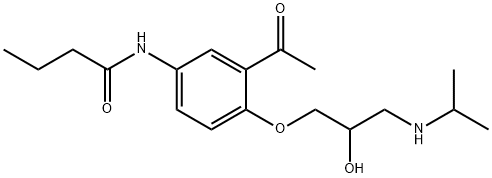CHEMICAL AND PHYSICAL PROPERTIES
| Physical Description | Solid |
|---|---|
| Melting Point | 136-138 |
| Solubility | 259 mg/L |
| LogP | 1.71 |
| Caco2 Permeability | -5.83 |
| Dissociation Constants | 9.52 |
| Collision Cross Section | 190.2 Ų [M+H]+ [CCS Type: TW, Method: Major Mix IMS/Tof Calibration Kit (Waters)] |
| Kovats Retention Index | 2795 |
COMPUTED DESCRIPTORS
| Molecular Weight | 336.4 g/mol |
|---|---|
| XLogP3 | 1.7 |
| Hydrogen Bond Donor Count | 3 |
| Hydrogen Bond Acceptor Count | 5 |
| Rotatable Bond Count | 10 |
| Exact Mass | 336.20490738 g/mol |
| Monoisotopic Mass | 336.20490738 g/mol |
| Topological Polar Surface Area | 87.7 Ų |
| Heavy Atom Count | 24 |
| Formal Charge | 0 |
| Complexity | 401 |
| Isotope Atom Count | 0 |
| Defined Atom Stereocenter Count | 0 |
| Undefined Atom Stereocenter Count | 1 |
| Defined Bond Stereocenter Count | 0 |
| Undefined Bond Stereocenter Count | 0 |
| Covalently-Bonded Unit Count | 1 |
| Compound Is Canonicalized | Yes |
PRODUCT INTRODUCTION
description
Acebutolol is an ether that is the 2-acetyl-4-(butanoylamino)phenyl ether of the primary hydroxy group of 3-(propan-2-ylamino)propane-1,2-diol. It has a role as a beta-adrenergic antagonist, an anti-arrhythmia drug, an antihypertensive agent and a sympathomimetic agent. It is a member of ethanolamines, a propanolamine, a secondary amino compound, an ether, a monocarboxylic acid amide and an aromatic amide. It is a conjugate base of an acebutolol(1+).
